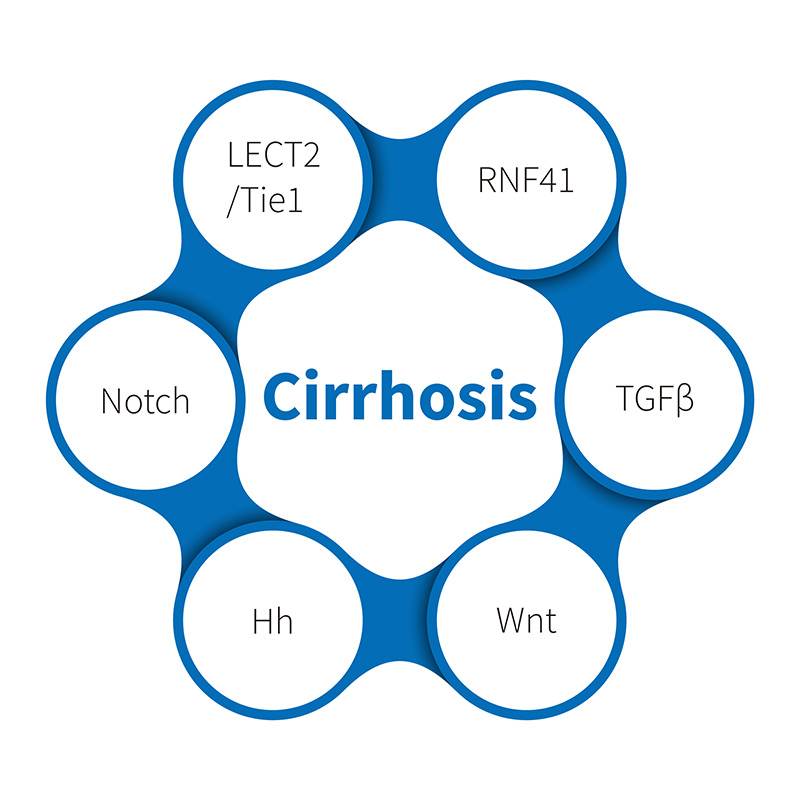Cirrhosis represents the final stage of chronic liver damage caused by various conditions, including autoimmune diseases, hepatitis, and excessive alcohol consumption. The liver, being a regenerative organ, attempts to heal itself after each injury. However, repeated damage leads to the accumulation of scar tissue, which impairs its ability to perform essential functions such as detoxifying the blood, synthesizing proteins, and regulating metabolism. Over time, the liver becomes progressively less efficient, leading to complications that can threaten a person’s life.
Autoimmune Diseases and Their Role in Cirrhosis
Autoimmune liver diseases like autoimmune hepatitis (AIH), primary biliary cholangitis (PBC), and primary sclerosing cholangitis (PSC) are leading causes of cirrhosis. These conditions arise when the immune system mistakenly attacks the liver, causing chronic inflammation and progressive scarring.
Autoimmune cirrhosis is an area of growing concern due to its potential to remain undiagnosed until reaching an advanced stage. To better understand its pathophysiology and develop effective therapies, researchers rely heavily on small animal models, which replicate human autoimmune responses.
The Importance of Small Animal Models in Autoimmune Cirrhosis Research
Why Small Animals?
Small animals, such as mice and rats, are widely used in biomedical research due to their genetic similarity to humans, ease of handling, and rapid reproduction rate. They offer an efficient and ethically manageable model for studying complex diseases like cirrhosis. Here’s why they are indispensable:
Genetic Engineering: Advances in genetic modification allow researchers to create animals with specific immune traits similar to those found in human autoimmune conditions.
Cost-Effectiveness: Small animals are more affordable to maintain compared to larger species, enabling large-scale experiments.
Reproducibility: They offer consistent results under controlled experimental conditions, ensuring reliable data.
Types of Small Animal Models
1.Genetically Engineered Models
Knockout and Transgenic Mice: These mice are designed to lack certain genes or overexpress others, helping researchers understand how specific genes influence autoimmune responses and the progression of cirrhosis.
Humanized Mice: Mice engineered to carry components of the human immune system, providing insights into how autoimmune diseases develop in humans.
2.Chemically Induced Models
Chemicals like carbon tetrachloride (CCl₄) or thioacetamide (TAA) are used to induce liver injury in rodents, mimicking the chronic damage seen in autoimmune diseases.
3.Spontaneous Models
Certain strains of mice naturally develop autoimmune conditions, making them ideal for studying disease progression and potential interventions without external manipulation.

Breakthroughs in Autoimmune Cirrhosis Research
1.Understanding Immune System Dysfunction
Autoimmune cirrhosis involves a complex interplay of immune cells, cytokines, and genetic factors. Small animal studies have revealed:
· The role of T-helper cells (Th17) in promoting inflammation.
· The contribution of regulatory T cells (Tregs) in suppressing harmful immune responses, highlighting potential therapeutic targets.
· The involvement of cytokines such as IL-1β, TNF-α, and IFN-γ in liver damage.
2.Biomarker Development
Early diagnosis is crucial for managing autoimmune cirrhosis. Research using small animal models has led to the discovery of biomarkers like:
· Elevated transaminases (ALT and AST).
· Autoantibodies such as anti-liver/kidney microsomal antibodies (LKM) and anti-smooth muscle antibodies (SMA).
3.Drug Testing and Development
Small animals have been extensively used to evaluate treatments for autoimmune liver diseases, such as:
· Immunomodulators: Drugs like azathioprine and mycophenolate mofetil have been tested to assess their ability to suppress immune-mediated liver damage.
· Biological Therapies: Monoclonal antibodies targeting pro-inflammatory cytokines have shown promise in preclinical studies.
· Emerging Therapies: Gene editing techniques like CRISPR-Cas9 and RNA-based treatments are being explored in animal models.
4.Gut-Liver Interaction Studies
The gut microbiome plays a key role in liver diseases. Small animal models have demonstrated how alterations in gut bacteria influence immune activation and liver inflammation. Probiotics, prebiotics, and dietary interventions are being tested as complementary therapies.
HKeybio: Pioneering Autoimmune Disease Research
HKeybio, a leading Contract Research Organization (CRO), specializes in preclinical studies for autoimmune diseases. Their small animal and detection test facility in Suzhou Industrial Park and non-human primate test base in Guangxi underscore their commitment to cutting-edge research.
Key Strengths of HKeybio
1.Experienced Team: With nearly 20 years of collective experience in global pharmaceutical research, HKeybio’s team ensures innovative and high-quality results.
2.State-of-the-Art Facilities: Their advanced equipment supports sophisticated preclinical studies, including imaging, biomarker analysis, and molecular testing.
3.Comprehensive Models: By utilizing both small animals and non-human primates, HKeybio enables a comprehensive understanding of autoimmune diseases and facilitates translational research.
Through these capabilities, HKeybio plays a pivotal role in advancing the field of autoimmune cirrhosis research.
FAQs
What are the most common animal models used in cirrhosis research?
Mice and rats are the most commonly used models. They may be genetically modified, chemically induced, or naturally predisposed to autoimmune diseases.
How does the gut microbiome influence autoimmune cirrhosis?
Research shows that gut bacteria play a crucial role in immune system regulation. Dysbiosis (an imbalance in gut bacteria) can worsen liver inflammation and scarring.
What is HKeybio’s role in autoimmune research?
HKeybio is a CRO that specializes in preclinical studies of autoimmune diseases, using small animal and primate models to drive innovation in diagnostics and treatment.
Conclusion
The use of small animal models in autoimmune cirrhosis research has revolutionized our understanding of the disease. From identifying immune system dysfunctions to testing groundbreaking therapies, small animals remain an invaluable tool in the fight against cirrhosis. Organizations like HKeybio are leading the charge, utilizing advanced technologies and expert knowledge to push the boundaries of preclinical research.
As we continue to uncover the mechanisms behind autoimmune diseases and their progression to cirrhosis, the role of small animal models will remain central. By bridging the gap between basic research and clinical applications, these models are paving the way for innovative treatments that could significantly improve the lives of patients worldwide.














